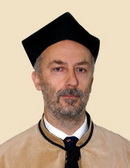Imaging Cytometry Unit
|
Microscopy is extensively used in almost every field of contemporary biology. Researchers at the Faculty currently share one standard confocal microscope with limited capabilities. Current investment will enable them to use new apparatus in researches focusing on biochemistry, biophysics and molecular biology e.g studies on DNA damage and repair, DNA-drug interaction, oxidative stress, hypoxia, protein subcellular localization, protein – ligand interaction), cell migration and many others. |
 |
|
|
Modernized laboratory will enable research on:
Team leaded by prof. Dobrucki together with team of prof Zbigniew Dażynkiewicz (New York Medical College) has developed a new fluorescent marker that allows direct staining of collagens. This will allow observation of collagen distribution / localisation in tissues and will facilitate reaserch on multiple biological processess (e.g. aging) and development of new medicinal products "Thanks to that that invention, we will be able to study living, isolated but not fixated and not damaged tissues" - said prof. Dobrucki (PAP)
|
||
Person in charge: |
||
Jerzy Dobrucki, PhD, DScHead of Cell Biophysics Laboratory FBBB Deputy dean for International Cooperation and Science, FBBB UJ More information: Cell biophysics department, JU |
 |
|


